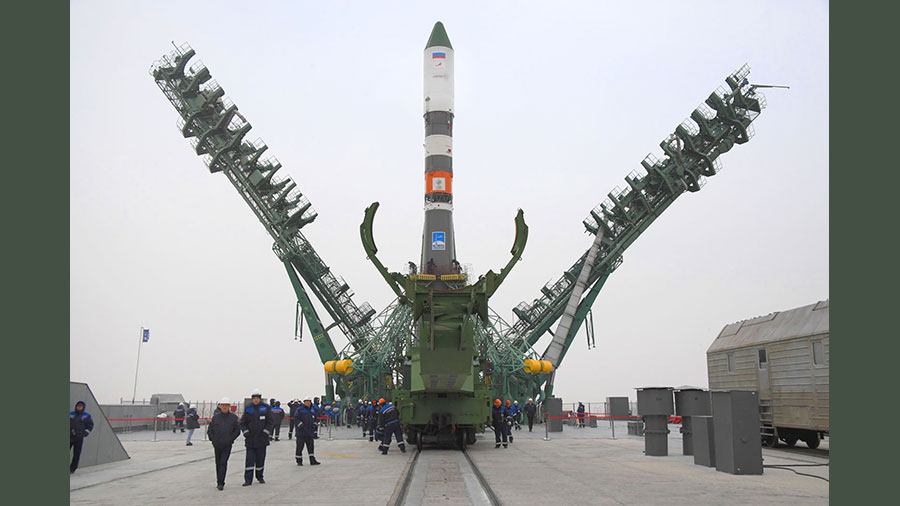Cargo Mission Ready to Launch Amid Busy Space Science Schedule

A new resupply mission stands ready to launch from Kazakhstan tonight to the International Space Station. As the seven Expedition 68 crewmates await their space delivery they tended to vegetables, scanned each other’s eyes, tested robotic inventory scanning, and explored plasma physics.
A rocket with the ISS Progress 82 cargo craft atop is counting down to its lift off from Kazakhstan’s Baikonur Cosmodrome at 8:20 p.m. EDT today to the orbiting lab. Filled with about three tons of food, fuel, and supplies to replenish the orbital residents, the Progress 82 will take a two-day trip to the space station and automatically dock to the Poisk module at 10:49 p.m. EDT on Thursday. NASA TV will broadcast the events live on the agency’s app and website with launch coverage beginning at 8 p.m. on Tuesday and docking coverage at 10:15 p.m. on Thursday.
Back in space, the four astronauts and three cosmonauts aboard the station concentrated on numerous state-of-the-art science experiments benefiting humans both in space and on Earth. Ranging from space botany, human research, and microgravity physics, the studies help crew members adjust to long-term missions in weightlessness and provide innovations enhancing products and services on Earth.
NASA Flight Engineer Frank Rubio spent Tuesday morning nourishing and monitoring vegetables growing inside the Columbus laboratory module. The XROOTS investigation explores soilless methods, or hydroponic and aeroponic techniques, to grow crops in space and sustain crews living off the Earth.
Rubio also joined his fellow flight engineers, Josh Cassada and Nicole Mann, both from NASA, and Koichi Wakata from the Japan Aerospace Exploration Agency (JAXA) for eye scans using the Human Research Facility’s ultrasound device. The optic exams give researchers insight into how microgravity affects the eye’s shape, pressure, retinas and vision.
Mann, who also cleaned and inspected U.S. module hatch seals, joined Wakata and pointed their cameras outside the station photographing the condition of solar array components. In addition, Wakata turned on an Astrobee robotic free-flyer to demonstrate its use of wireless technology, or radio frequency identification, to manage cargo inventory on the space station. Cassada worked inside the Zarya module to maximize storage space.
Commander Sergey Prokopyev configured research hardware in the Columbus module to explore plasma crystals, or highly-charged microparticles, to gain fundamental space physics knowledge and possibly improve the design of future spacecraft. Cosmonauts Dmitri Petelin and Anna Kikina took turns studying future planetary spacecraft and robotic piloting techniques. Petelin then went on and explored how the digestion system adapts to microgravity, while Kikina observed Earth’s nighttime atmospheric glow in the near-ultraviolet wavelength.
from Space Station https://ift.tt/YrQUcPO
Comments
Post a Comment